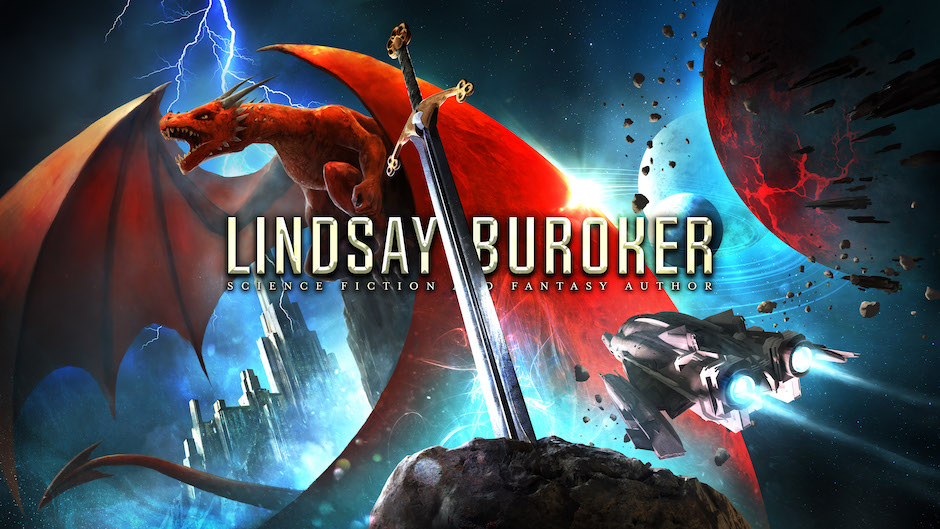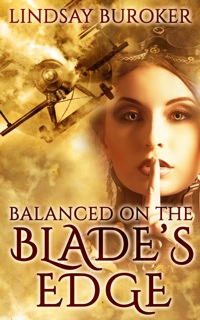For today’s blog entry, let’s answer some questions on self-publishing and e-publishing.
LB asks:
Epublishing has broadened the market for novellas. Do these sell as well on Kindle as novels?
While many readers prefer longer stories, lots of them will give short stories and novellas a try if the blurb sounds good. Most months, Flash Gold (and its recent sequel, Hunted) has been behind my novels in sales, but not necessarily far behind. I’ve come across some ebook authors who are specializing in shorter workers, and they only write novellas (and they sell more ebooks than I do!).
You’ll probably want to price novellas for less than novels, and I also recommend making it clear in the blurb that the story isn’t a novel. Some people get irked when they thought they were buying a novel and they ended up finishing the ebook in an hour.
Joe L. asks:
With the advent of ebooks and self-publishing, the ideas that I’ve had wandering around in my head for many years have the possibility of becoming at least short stories. Where do you suggest I start on getting them out?
First, get some complete stories down on paper (there are a lot of writers who start lots of projects, but never finish them, and that’s kind of important if you want to publish!). Then it’s a good idea to get feedback from people who are in the biz (other writers or editors who aren’t related to you and won’t feel obligated to say nice things). Nobody’s stuff comes out perfect, and most of us spend a lot of time taking classes and participating in workshops before we have stories that are ready to publish.
I personally think it’s a good idea to submit some short stories to magazine and e-zine markets out there. While it probably won’t do much for your writing career, and you’ll be lucky to make $5 in most cases, it’s sort of a sign that you’re ready. If you start making some sales, your writing is probably polished enough that you can find an audience out there that will enjoy it.
Ceae asks:
What was your experience with getting your novels into the Kindle store? The Nook store?
That’s been the easiest part! (Getting people to find and buy the novels is the hard part, heh heh.) You can upload your ebook files and cover art at Amazon’s Kindle Direct Publishing and Barnes & Noble’s Pub It.
Marc Johnson asks:
How come you don’t use different covers for your paperback books and your ebooks? And how can I sell lots of books like you? 😀
Does anyone use different covers for ebooks and paperbacks? Hm. I’d think that would be confusing to the audience. Also, if you’re paying for your cover art, you’d have to pay twice as much.
As for the rest, I’m pretty transparent on what all I’ve tried and am continuing to try. You can browse through the archives here or check out my new self publishing blog.
Chad Kearbey asks:
How do you handle taxes with e-book publishing?
This will be my first year getting tax forms from Amazon, Smashwords, Barnes & Noble, etc. for e-publishing specifically, but I assume they will send out 1099 Misc forms (for the U.S. anyway; I’m not sure what folks in other countries get from them), and I’ll treat it like any other self-employment income.
You tend to have to pay more in taxes when you’re self-employed, so it’s a good idea to set aside a chunk of the money as it’s coming in. You do get to write off your expenses, though, and that’d include things like buying advertising, web hosting for your author site, paying for an editor, cover designer, formatter, etc. Make sure to keep receipts for everything like that.
Then you can decide whether you want to use an accountant or tax adviser or just wing it with TurboTax or something similar. Those software packages have versions for self-employed folks and wizards to walk you through everything.
In your second year of earning income as a self-employed person, the IRS (again, U.S. only here) will expect to you pay quarterly estimates based on your previous year’s income.
Of course, a tax adviser can answer your questions here much better than I can!
Serena Casey asks:
Do you know what percentage of people who sample your books actually end up buying?
No, they don’t share this information with us. It’s too bad, since it might be helpful to know. Although, it might be a blow to the old ego too!
Ikkinlala asks:
Would you rather have readers purchase printed books or e-books?
Whatever someone is interested in buying is fine with me! If you want the author to receive the biggest cut, it’ll depend on what the author has everything priced at. If paperbacks are priced below $12 (and I’m talking about indies doing print-on-demand publishing), they’ve probably made the book as affordable as they can, and they’re not making a huge chunk of change on the sales. If their ebook is above $2.99, you’re sending them about $2 on every sale (we don’t make much on 99-cent ebooks though, and most authors are using that price to try and get you into their world, so you’ll try their other books!).
But anyway, the short answer is that most authors would be delighted to have you purchase anything from them, ebook or paperback.




In the US, I’ve been told by more conventional entrepreneurs I know that you pay less in taxes if you incorporate as a LLC.
It’s not a bad idea to treat it as a business, and you may be right about paying less in taxes!
Thanks for the answers! You always seem to have interesting info. I agree about keeping the cover art the same.
I think ebook covers and paper book covers should be different. I always thought of ebook covers as being more simplistic and symbolic while on a paper book you can do a lot more. Yes, you would have to pay for the cover art again and pay more for a paper book art, but I think it’d be worth it.
I’m not sure if it’d be confusing to people seeing as everything else would be the same and it should all be linked together.
I do want to say I have seen people do it, but it’s a rarity. Also, I’m not sure if it counts because it’s a traditional publisher and say the ebook cover will just be an updated cover from a very old book.
If I ever release a paper back book, I’ll do it.
That is a good point. For the paper version, you could have more detail, etc. On the other hand, if it is sold on-line, you’d still want to have it look good as a small thumbnail.
Haha, the cool thing is at least you have the option of trying whatever you want 🙂
It’s a good point that you have to think about how things will look as a “thumbnail” when you’re designing ebook covers, so I can see where you could have fun with a more detailed one for a paperback.
I want to know if you make more or less money than with traditional publishers, which means comparing numbers from someone who does both or did both. I wouldn’t have found this without your twitter post to win a gift certificate, so please enter me for that. One thing I do know from karen Baney’s post on Wendy Young’s blog is cross promo work + social media works. But I want to do less of that & more writing, so I still want traditional publishing. This was the tweet: #authors – How to Double Your Sales wp.me/p1JRnw-7y @karen_baney guest posts on my blog @wendyyoung #writing #marketing #sales
Great question, Sher, and thanks for stopping by. I pasted a copy of your comment in the questions/giveaway thread so I’d remember to include you.
I could do a full blog post just to answer you (and I might just do that!), but I think you might find this post very interesting: http://write2publish.blogspot.com/2011/04/midlist-authors-traditional-or-self.html (it compares two “midlist” authors, one indie and one traditional, and, yes, the indie author is making a lot more money). Of course, it’s harder to get the ball rolling as an indie, but most traditionally published authors are stuck doing a lot of the marketing themselves these days too.